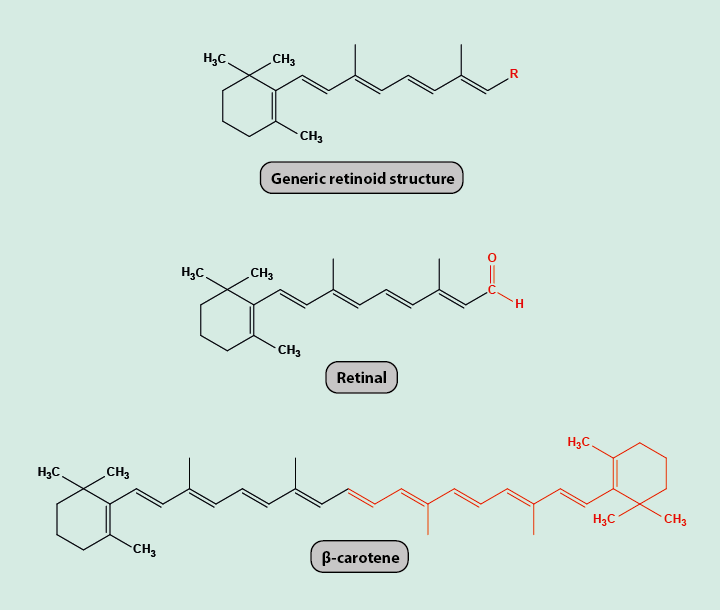Retinoids
The term retinoid captures a whole class of chemicals, all sharing one common structural motif (Figure 1, top) with many variations.

Apart from the natural role of retinoids in the vision process, as precursors for vitamin A, as agents in cell differentiation and proliferation (including bones) and an involvement in the regular function of the immune system, there are several uses of retinoids in medicine or as a component in cosmetic products.
Topical retinoid preparations are used to treat some skin conditions such as severe acne or psoriasis (dry, scaly skin patches), and are a component in some ‘anti-aging’ lotions and potions. Retinoids in such preparations generate superficial inflammation of the skin and activate collagen production which inevitably smooths out some fine lines and superficial wrinkles. For the effect to persist, the treatment has to be continuous (but may also cause severe skin irritation). Vitamin A and β-carotene, along with further retinoids and other substances, have been suggested as ‘chemoprevention agents’ to reduce the transformation risk of some persistent oral, pre-malignant lesions (for example, oral leukoplakia) into oral malignancies. The evidence for the efficacy of such agents is poor.